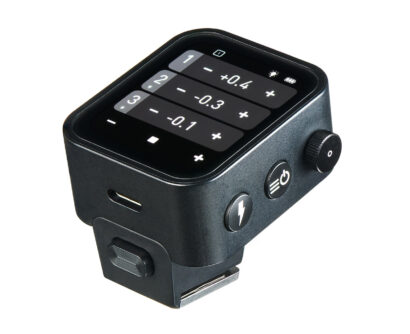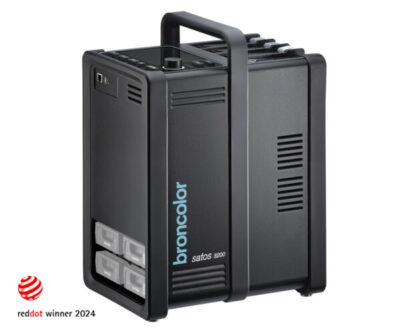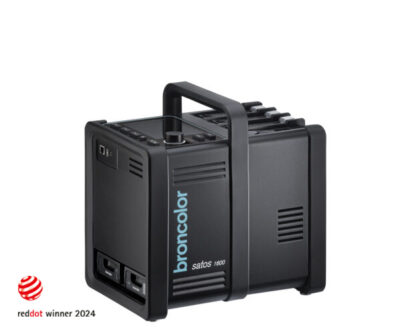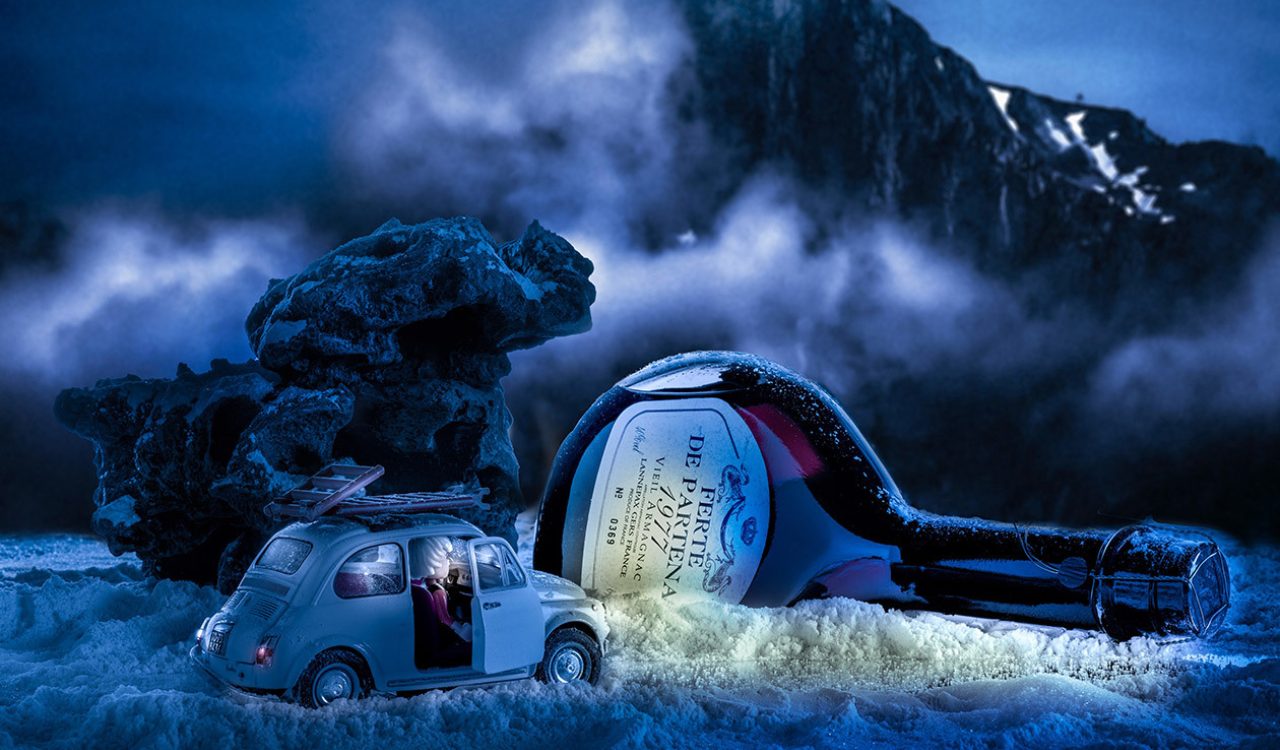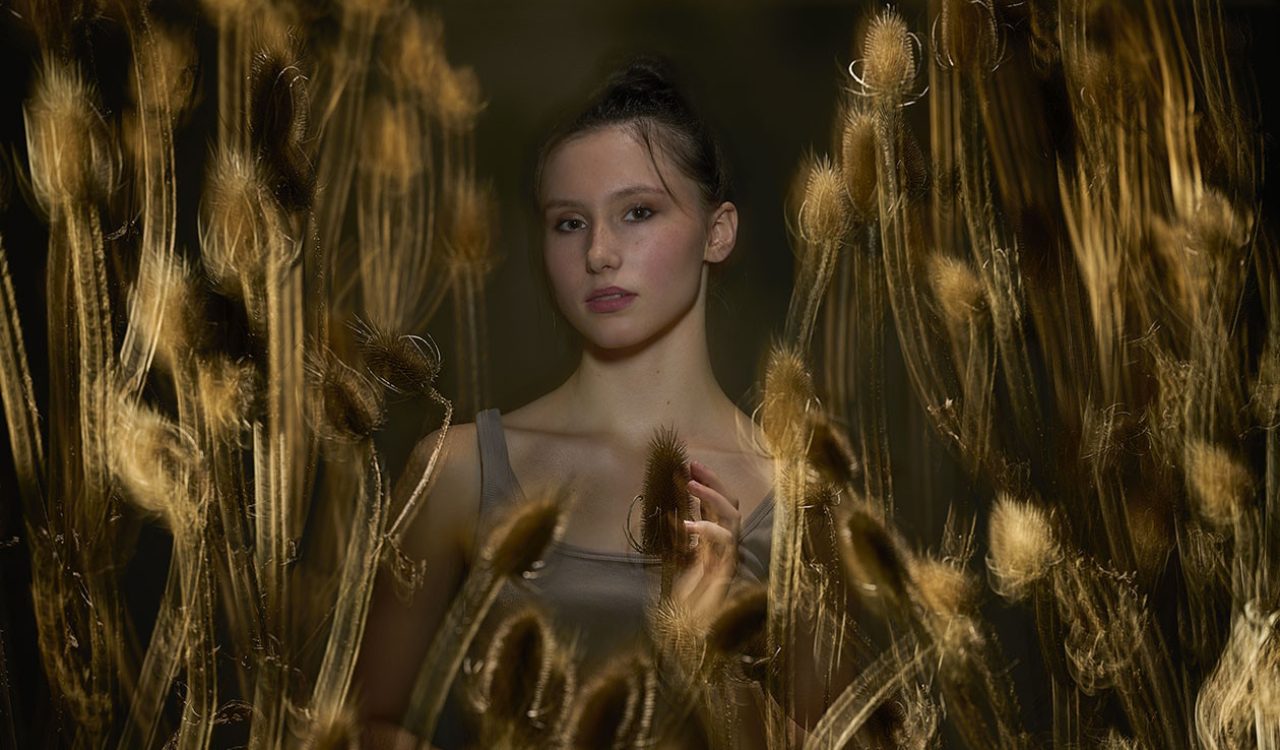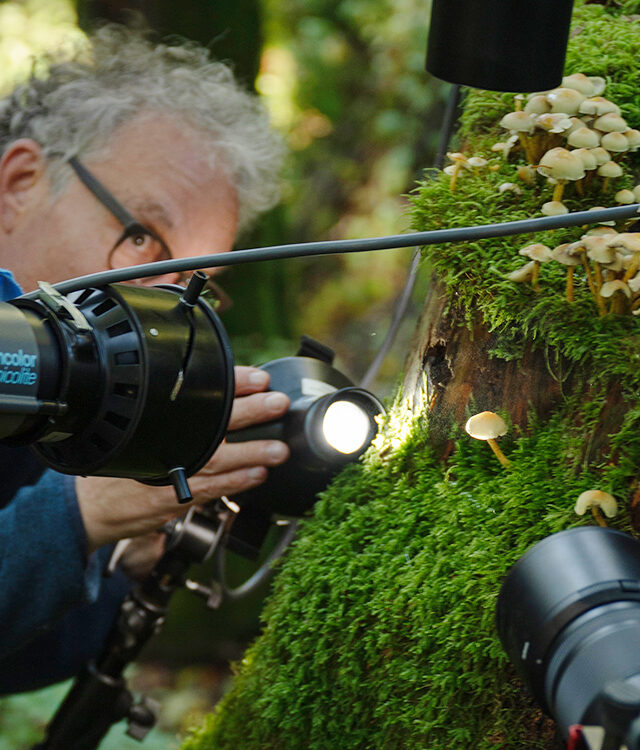Photographing an object the size of a matchbox in a controlled way is not trivial. Adding a shiny and self-illuminating display doesn’t make things any easier either — but let’s take it step by step: Insights into broncolor advertising photography for the new RFS 3 flash trigger.
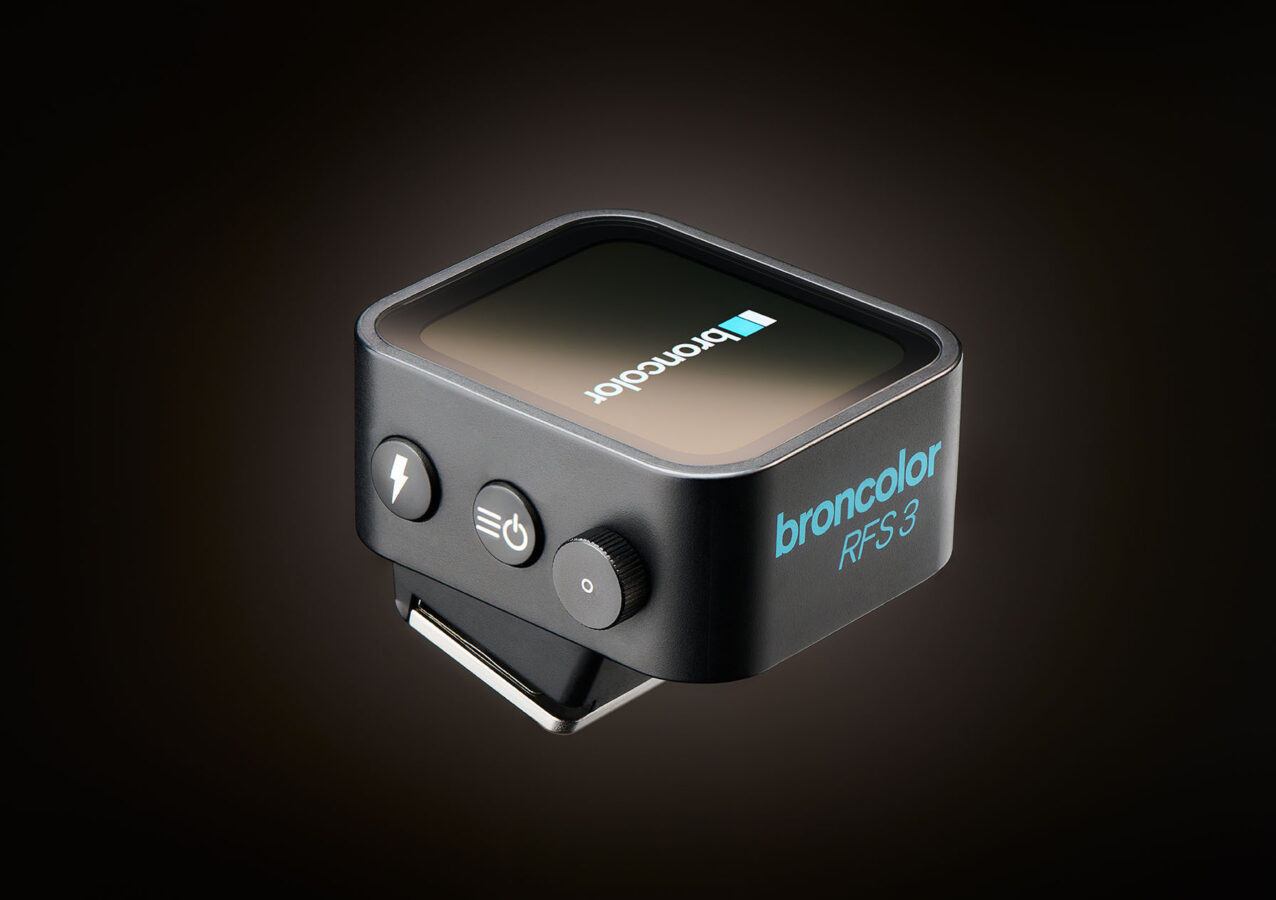
First, the transmitter is glued onto an aluminum profile. Care is taken to ensure that this is only visible behind straight edges, making it easy to remove during post-processing. For the same purpose, an additional image of the background without the object is also taken. The basic lighting is provided by a softbox with side lengths of 35 and 60 cm. Its light is reflected from the opposite side using a small white cardboard.
The matte-structured frame of the display and the glossy display itself are lit independently — but exposed simultaneously. The matte frame is lit by the Picobox placed vertically above the trigger. It is positioned in such a way that no reflections appear on the display.
To highlight the glossy characteristics of the display, I choose a fast but not sharply defined brightness gradient. To achieve this, a Striplite 60 is placed behind a white acrylic panel, which reflects in the display as seen from the camera. The distance between the Striplite and the diffuser panel defines the extent of the brightness gradient.
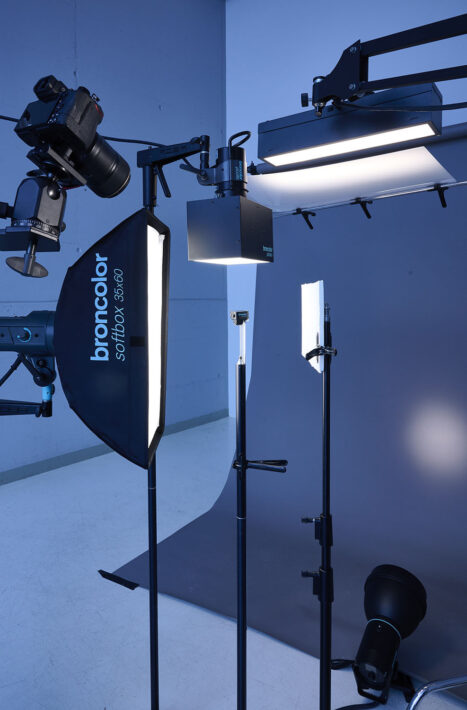
The relatively long focal length (105mm) and the small object require a very narrow spot of light on the background, so that it illuminates just the area directly behind the trigger and quickly vignettes toward the image corners. A super-tight honeycomb grid on a P70 standard reflector is the solution.
Photographed with a mirrorless full-frame camera and a focal length of 105mm. At ISO 100 and working aperture 16.0, the shutter speed is 1/4s. This allows the glowing broncolor lettering on the display to appear (in the otherwise darkened studio).
A total of 6 shots with different focal planes were necessary to achieve a perfectly sharp image using focus stacking.

